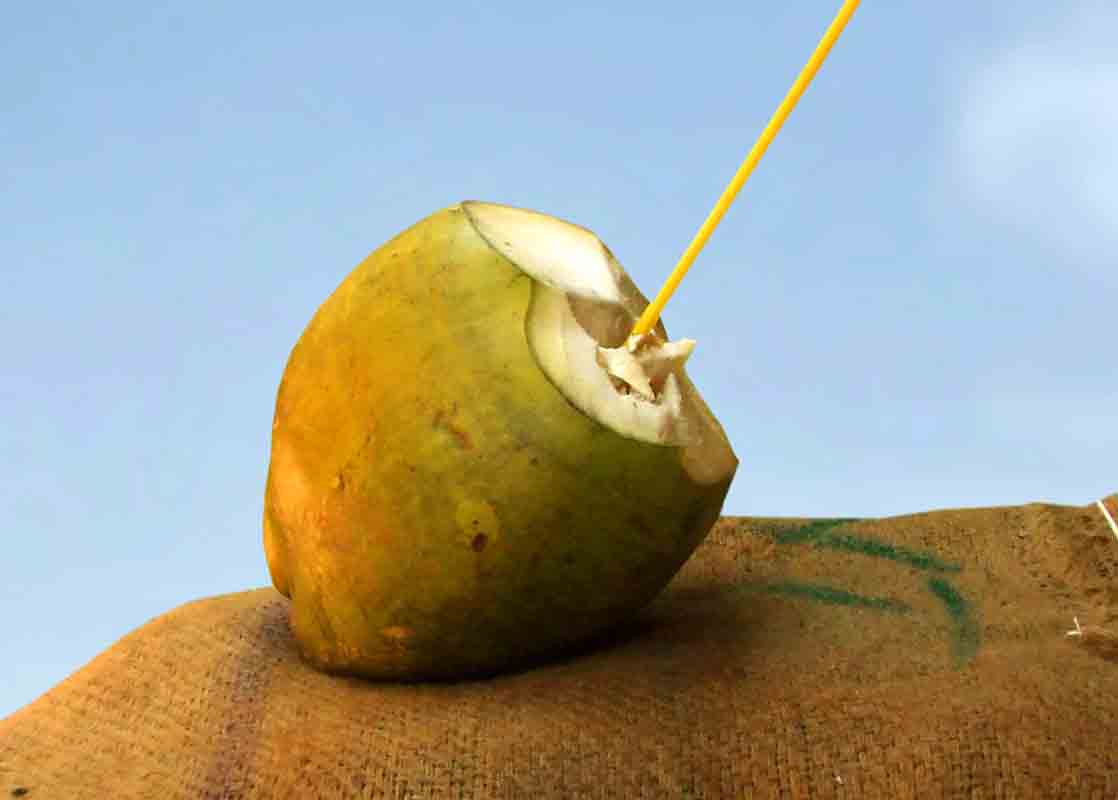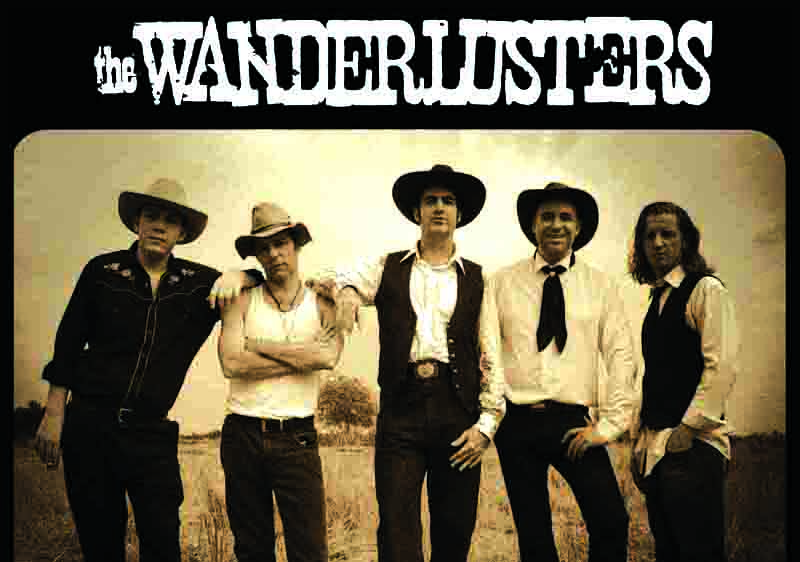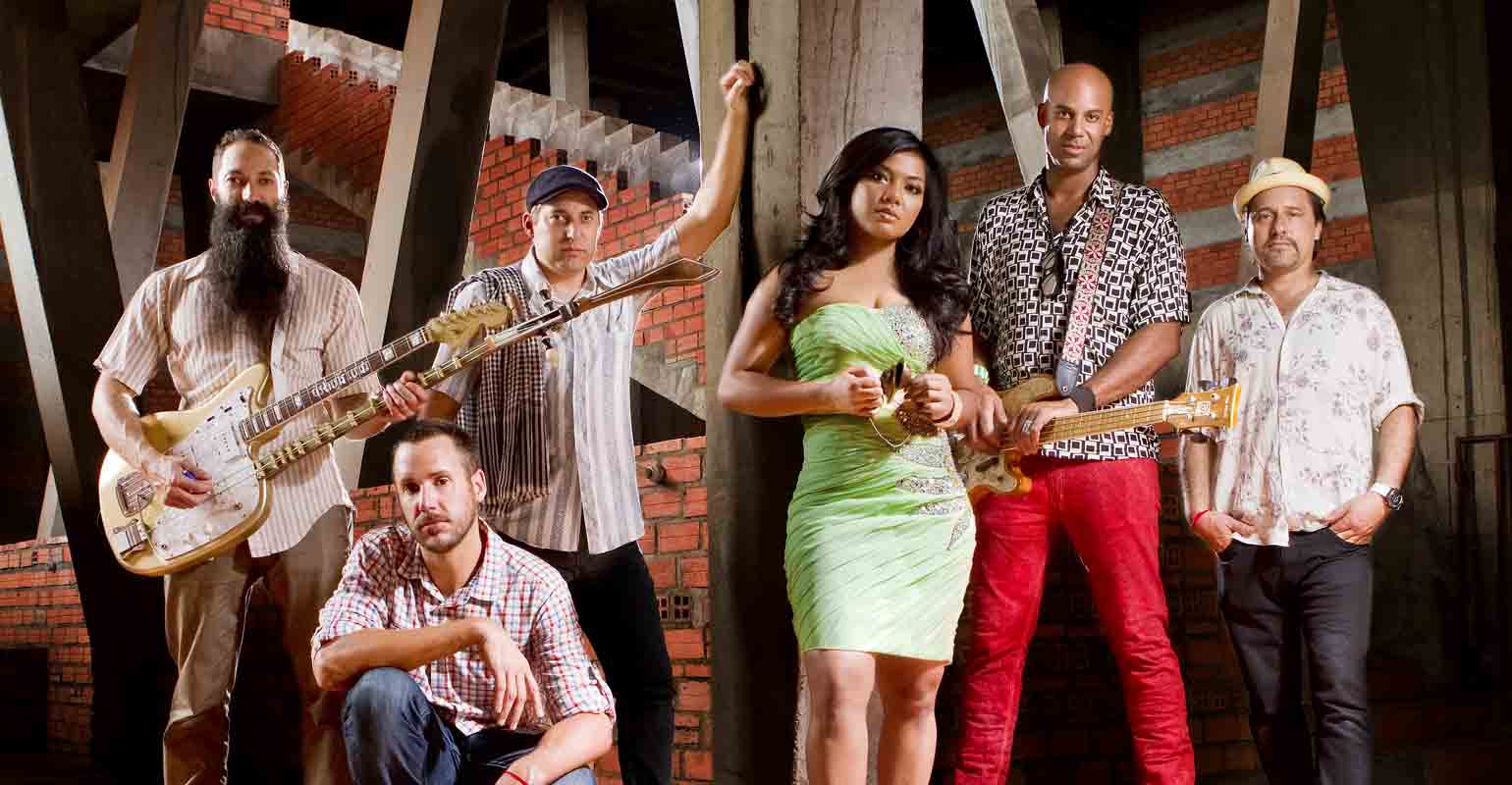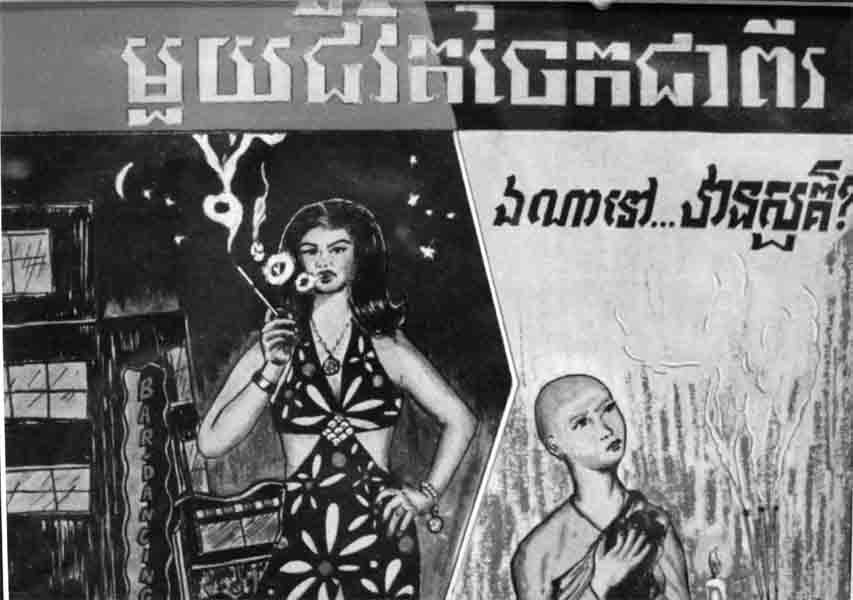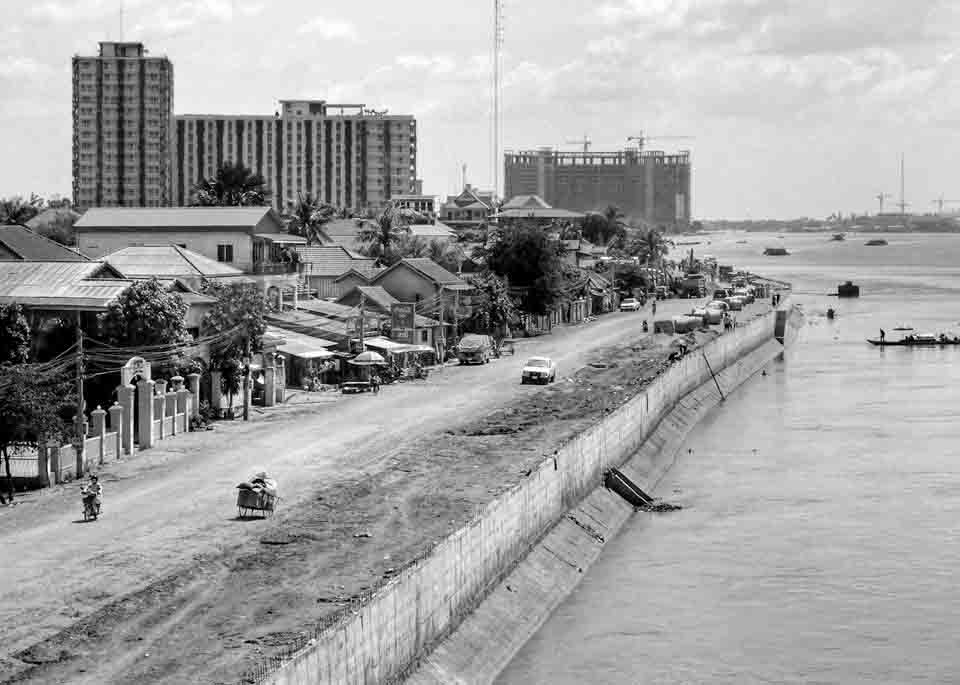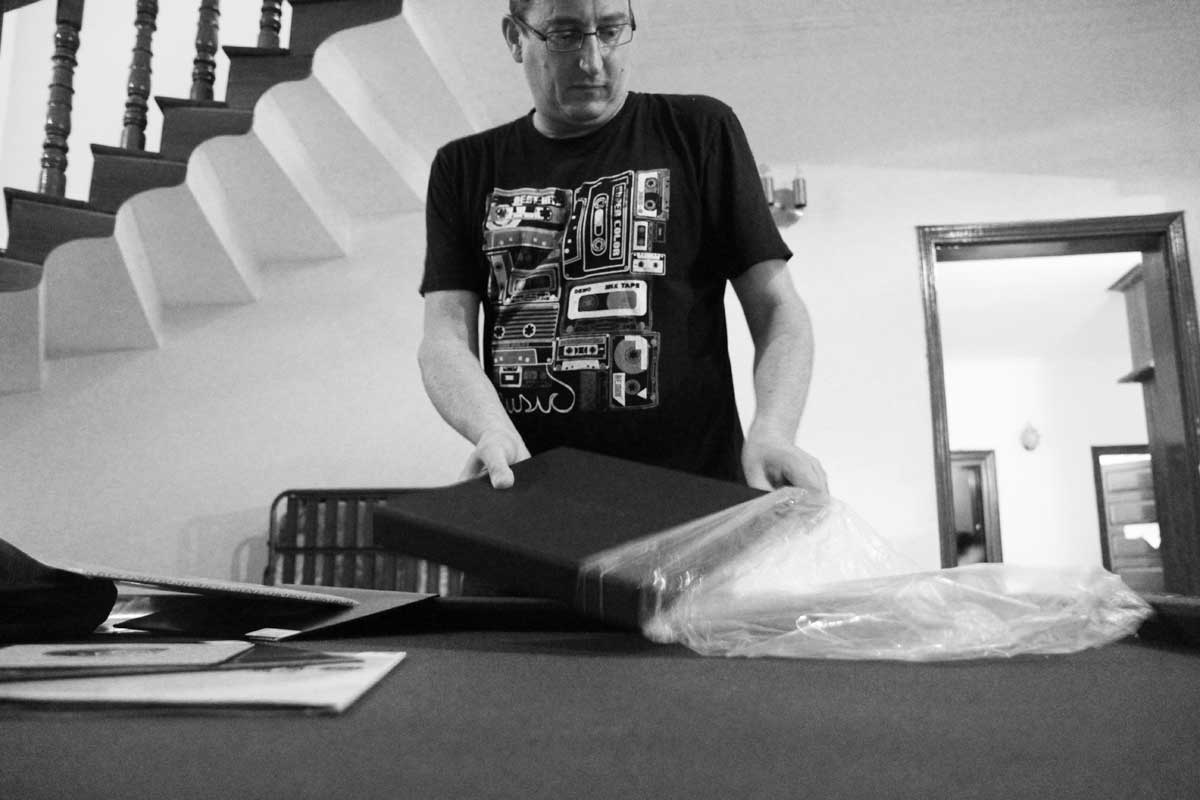A recent Global Post article fell in love with our fair capital for its cheap coconuts, cheap housing and cheap beer. And while low-cost she may be, it’s quality, not price, that makes Phnom Penh more than just a cheap thrill
…..
Phnom Penh, you have arrived.
No longer are you the shattered, post-war basket case where pot-holed streets go dark at sundown and machine-gun fire regularly pierces the night. You could be Melbourne, Tokyo, Zurich or Sydney.
So swoons the online news service Global Post, which last week published a story about our capital entitled ‘21 reasons you should drop everything and move to Phnom Penh’. As the author of the piece argues, “It just might be the greatest place in the world to live.”
That’s daft, of course. Phnom Penh is not a bad place to live – if you don’t mind the heat and the dust and the mad traffic or any other number of things that drive clingers to first-world orderliness mad. But not even after three bottles of Chivas would government spokesman Khieu Kanharith claim it’s “the greatest place in the world”.
Clearly it’s not. That doesn’t mean it’s not a pretty damn good place to live, however, because clearly it is, yet for almost none of the reasons that the Global Post story professes.
The most striking error of omission comes by way of the capital’s diverse culinary landscape. Phnom Penh is an eater’s paradise. The erstwhile Pearl of Asia supports a revolving list of more than 3,000 restaurants, according to the Yellow Pages. And that number no doubt misses the untold legions of greasy noodle stalls and street-side sandwich carts where cheap and delicious eats come plated for mere thousands.
Then there are the barang-owned and barang-friendly places: world-class French (Armand’s, Atmosphere, Topaz), authentic Mexican (Alma’s, Cantina, Taqueria Corona), healthy vegetarian (Artillery, Vego, The Vegetarian), hearty Russian (Irina’s), Middle Eastern (Petra, Beirut, Turkish Delight), Indian (Shari Punjabi, Flavours of India), Italian, Korean, Japanese, Chinese, sandwiches, donuts, pizzas – the list literally goes on forever.
Yet all GP gives us is ‘Number 15: Amok is delicious’, with a mistakenly identified bowl of vegetable curry. Yes, seriously, they got the photo wrong.
As a perfunctory nod to entertainment, Emily Lodish, the author of the story and a former editor at The Cambodia Daily, gives us The Rock, the capital’s south-side monument to overpriced scotch, karaoke and reverb, reverb, reverb. Absent are the old-school haunts that made Phnom Penh epic – Zeppelin Cafe, Howie’s Bar, The Heart of Darkness – and newcomers like Nova, Pontoon and Code Red. There’s no mention of the town’s vaunted crop of sky bars (Eclipse, Kolab Sar, Maison d’Ambre), no tips on killer happy hours (NagaRock, Bouchon, the Elephant Bar), no shout outs to the burgeoning live music scene (Slur, Sharky’s, Equinox, Oscar’s).
In short, their list sucked coconuts.
Should you really drop everything and move to Phnom Penh? For the half-crazy, the dead-enders and 8am boozers with no place left to run, definitely maybe. Phnom Penh remains a wonderful place to be hard up and dead broke. For the sane, however, if you are planning on trashing a rich and rewarding career of being overworked and underpaid for a layabout’s life sauntering from the pool to the bar to the massage table, at least do it with competent counsel and a fruity alcoholic beverage with an umbrella stuck in it.
For starters, you should know that there is exactly one reason that makes Cambodia compelling (you have to discover it for yourself). The rest are superfluous. Secondly, almost everything Global Post said was wrong.
GLOBAL POST: 1. Motodops know everything
ADVISOR: You MUST be kidding me. Motodops usually know next to nothing – most noticeably useful things such as a language that you speak or how to read a map. Ask for a ride to Russian Market and you’re just as likely to end up at O’Russey. Plus motos are dangerous: an average of five people per day die in road accidents, most of them motorcycle riders. Tuk tuks are a much safer bet. While they cost a bit more, their slower pace affords a view of the city that’s impossible to appreciate when you’re hanging on for dear life. Even better are cyclos, the fast-disappearing three-wheeled pedicabs. There’s no better way to explore the city. The few remaining old-timers still on the pedal have witnessed much. Just being in their presence is humbling.
GP: 2. Hammocks are everywhere and, coincidentally, so is nap time
A: As shocking as this may sound, Phnom Penh is not the only city in the world to possess hammocks. Nor are Cambodians the only people to nap in them. For a daytime kip, there are far better alternatives to a hot, sweaty, sciatic-nerve-crunching hammock. Try any number of the city’s hotel swimming pools (Sofitel, Himawari, InterContinental on the high-end; Patio, Plantation, Splash Inn at the mid-range; or Golden Boat at the budget level). For sky-high luxury, check out the rooftop hot tub at The Quay Hotel or top-floor sun-deck pools at Patio or Frangipani Fine Arts. That’s where the people you see napping in those hammocks would be if they were you.
GP: 3. Two-hour lunches
A: Leave it to overzealous expatriates to skimp on the important stuff. A two-hour lunch is wickedly unambitious. How could you possibly travel, eat and sleep in such a short amount of time? Three hours is de rigueur – 11am to 2pm – and allows for an unhurried pace, because work (pfffft!) places a distant ninth after family, friends, food, drink, fun, television, sleeping and root canals.
GP: 4. Cheapest massage ever
A: A massage should be many things – relaxing, rejuvenating or therapeutic, for instance – but cheap is not one of them. In fact, hunting for a ‘cheap’ massage is unlikely to lead anywhere that does not require bleaching first. Never take recommendations from know-it-all motodops, either, or you will likely find yourself bleaching before and after. For high quality yet affordable massage services, try Bodia Spa, which was voted Best Spa two years running by Advisor readers, or U&Me, which placed second in 2013.
GP: 5. So many holidays
A: Here’s one we can actually get down with. Cambodia not only has a crazy number of holidays, but also an official national policy which dictates that any vacation landing on a weekend must be reimbursed on the next available business day. Anyone who can afford it will often take an unofficial day or two off before and sometimes after the official holiday to stretch the absurdity even further. And why the hell not? The time off comes mandated by a seriously worker-friendly labour law (go figure, right?). Just don’t ask for a raise.
GP: 6. Monsoons that remind you nature is more powerful than people
A: Palm trees and sunshine every day? Nah, we moved here because of the rain… said no one, ever.
GP: 7. Free meditation at Wat Lanka
A: Score one for Emily and Global Post. Meditating with overweight, politically connected monks is seriously cool.
GP: 8. The best iced coffee you’ll ever drink comes in a plastic bag for 50 cents
A: We tried to tell our best friend in San Francisco this just last week: “Dude,” we said, “you should really quit your job, sell your house and move to Cambodia. They have really, really good ice coffee here for 50 cents.” He called the embassy first – and begged them to save me from drugs (the embassy could care less, of course). Next he called my parents and suggested an intervention. Then, being Californian, he ranted down the phone line for 20 minutes about sweetened condensed milk, high sugar content and diabetes before launching into a tirade about the scourge of plastic bags.
GP: 9. Fresh coconut vendors
A: Moving to another country in order to save a couple bucks on coconuts strike us as a tad extreme…
GP: 10. Vann Molyvann’s architecture is still found all over town
A: While true in a technical sense, the current state of affairs offers little reason to rejoice. As Director for Urban Planning and Habitat during the 1950s and 1960s, Vann Molyvann worked on more than 100 projects in Phnom Penh, Kirirom, Sihanoukville and Kep. Much of what remains today is unrecognisable. The Grey Building, for example, which is now the Phnom Penh Centre, has been “rendered and renovated beyond recognition,” wrote Claire Knox in The Phnom Penh Post in January last year. Other Molyvann creations are badly neglected (The White Building), and several of his signature pieces – The Preah Sumarit National Theatre and State Palace, for two – have been razed. “I feel extremely sad … It’s a systeme totalitaire!” the iconic architect told the Post. “There is no hope left for my buildings. I believe most of them will go. I cannot elaborate any more: I am sick of it.”
GP: 11. There are spirit houses at every establishment
A: If you are a Cambodian Buddhist, spirit shrines are a part of your daily ritual. If there was ever any novelty value in them, it likely wore off at an early age. For the rest of the world, the shrines are likely to hold about as much significance as icons from other religions that you don’t practice. Which is to say: zero.
GP: 12. Cruising the Tonle Sap
A: Score another for Emily and Global Post. There are few better ways to watch the sun go down over Phnom Penh than sitting topside on a boat on the Tonle Sap. Somehow, it never gets old.
GP: 13. Beer is cheaper than water
A: Anyone paying more for water than beer should have his or her passport revoked. A litre of bottled water costs 25 cents. A litre of beer, even at the cheapest beer garden, costs twice that much. But that’s not the point, really. The point is: don’t drink cheap, shitty beer. Spend the extra buck or two and sip something that won’t give you diarrhoea. There’s good stuff around: Beck’s, Hoegaarden, Cooper’s Pale Ale, Sierra Nevada. Buying local? Cambodia was voted best beer by our readers last year, with Anchor a close second. Search around; that’s half the fun.
GP 14. Plants grow like crazy and they don’t need any help
A: Was 21 some kind of magic number? The result of a bet after too many beers? Why not make it 9 or 11 or 15 and cut the daft ones? It’s hard to imagine anything more spectacularly inconsequential to the decision-making process than the rate of leaf and stem growth. “Honey! Why don’t we move to Phnom Penh, in Cambodia. I hear you don’t have to water the plants there.” Seriously, WTF? Unless, of course, this was intended as a coded message to the 420 set…
GP 15: Amok is delicious
A: Granted, a good amok is divine. And never mind about the picture in the GP story, which is a vegetable curry or something. But Cambodian food is far more than fish amok. In fact, the subtlety of great Cambodian cuisine relies on the interplay of flavours between foods, betweens meats and sauces, soups and mains, spicy flavours and mild. Cambodians love to dine out, too, as evidenced by the capital’s 3,000-strong restaurant industry. Any serious accounting of capital dining could hardly overlook such a fact.
GP: 16. Every day is an adventure
A: If you are lucky, this one is true: every day is an adventure. That’s mostly because the Cambodian space-time continuum vibrates at a frequency slightly askew to the rest of the cosmos. Time bends. Facts are malleable. Noon can mean 2pm or 5pm. Today can mean next week. But such foreigner-conceived trifles rarely influence the Cambodian grid, which is mostly immune to the barang’s neurotic obsession for accuracy and precision. Cambodia will force you to let go of the unimportant things, or it will make you a raving, jabbering mess. Consider making the adjustment as something akin to spiritual growth.
GP: 17. DVDs for $1
A: For the cheapskate introvert, this is actually pretty awesome. For the rest of us, however, Phnom Penh offers real-life movie theatres that show overseas blockbusters and locally produced hits. In 3D. In conditioned air. With popcorn. If you are stocking up on $1 bootlegs, YOU SHOULD GET OUT MORE!
GP: 18. You can use US dollars
A: Unless you are an American, this reason is worse than useless. And even then, why would it matter, except to save the Yanks the mental trouble of considering exchange rates? Seriously, how rude!
GP: 19. Getting out of the city is just as awesome as staying in it
A: Actually, getting out of the city is 1,000 times more awesome than hanging around in the city. The magic of Cambodia lies in the countryside. The people are even more friendly (impossible as that may seem), the pace of life even slower. Visit a rural wat. Walk through a rice field. It’s far more invigorating than life in the city. Look up ‘bucolic’ in the dictionary and you’ll find a Cambodian village.
GP: 20. The nightlife will surprise you
A: Holy sweet Jesus, No. 20! (Again, who decided on 21 of these?) What could you possibly say about Phnom Penh’s 24-hour nightlife, the thriving clubs with international DJs, the burgeoning home-grown music scene, the boutique watering holes and world-class eateries that make the New York Times gush. How about this: “No matter what you prefer, a casual chat in a beer garden or a dance-your-pants-off evening with Khmer teenagers, there is something for you.” Yes! That will suck just nicely, thankyouverymuch, Global Post.
GP: 21. You can get big apartments for cheap
A: So you can. And that’s not necessarily a bad thing, either, especially if you have a large family, or want lots of roommates, or just like to show up the poor people on your block. Second-hand Mercedes and Lexuses (Lexi?) are cheap, too. Nothing wrong with flauntin’ the bling if you got it, right?

